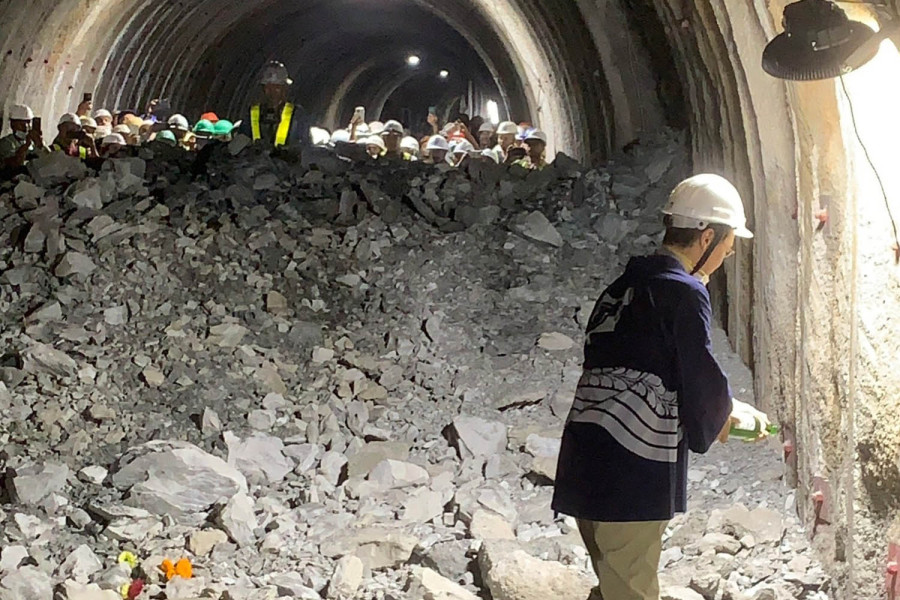Money
Breakthrough in evacuation route of Nepal’s first tunnel project achieved
The main and evacuation tunnels will be 2.68 kilometres and 2.55 kilometres long, respectively.
Post Report
The Nagdhunga-Sisnekhola tunnel, the first-ever road tunnel construction project in Nepal, made a major breakthrough in the construction of the first key section of the evacuation tunnel on Monday.
The main and evacuation tunnels will be 2.68 kilometres and 2.55 kilometres long, respectively.
The tunnel runs between Dhading, where the lower end of the tunnel is located, and Nagdhunga in Kathmandu, the higher part.
According to the road department, the evacuation tunnel digging work has been completed and the finishing work will be done.
The project claims that the main tunnel will be completed within the next four months.
Being constructed by the Japanese company Hazama-Ando Corporation, the tunnel passes under the western rim of the Kathmandu Valley, allowing motorists to avoid the treacherous hills which face frequent landslides.
Kikuta Yutaka, the ambassador of Japan to Nepal, visited the Nagdhunga tunnel construction site on Monday to inspect the breakthrough of the evacuation tunnel.
“The excavation of the 2.557 km-long evacuation tunnel was completed today, and the remaining work, including the excavation of the main tunnel, will be continued,” the embassy of Japan said in a statement.
On this occasion, ambassador Kikuta congratulated all the stakeholders, both Japanese and Nepali sides, for coming so far in spite of so many challenges.
He also wished them the best of luck for a smooth completion of the remaining work.
“As this project is the first-ever road tunnel construction project in Nepal with technology transfer from Japan, the implementation of this project would not only improve the transport of the site but also would facilitate future development in this sector in Nepal,” the statement reads.
The then Prime Minister KP Sharma Oli laid the foundation stone of the Rs22 billion project in October 2019. It was expected to be completed within three and a half years.
The project was also affected for a month after the home ministry issued a circular on January 4 to ban “illegal” crusher plants across the country.
Besides the tunnel from Sisne Khola to Basnetchhap, the project also has a 2.6 km four-lane approach road with a service lane on each side.
Of the total, 2.2 kilometres of the approach road will be from Basnetchhap to Thankot and the rest on the other side of the tunnel.
In 2016, the Japanese government agreed to provide a soft loan of Rs15.28 billion for the tunnel to eliminate the need to travel the circuitous route over the Valley’s western rim, which is the main overland link between the capital and the southern plains.
Its repayment period is 40 years, including a grace period of 10 years when the government will not have to pay any interest or repayment instalments.
Following the end of the grace period, the government will have to pay an annual interest at the rate of 0.01 percent.
It will also have LED lighting, mechanical ventilation, an evacuation tunnel door and emergency telephone service.
The approach road will have three bridges, toll booths and a roadside rest area for travellers.
The rest area, spread over 4,650 square metres, will have a parking space for nine heavy vehicles and 23 light vehicles, fast food restaurants, shops and toilets.




 8.12°C Kathmandu
8.12°C Kathmandu













